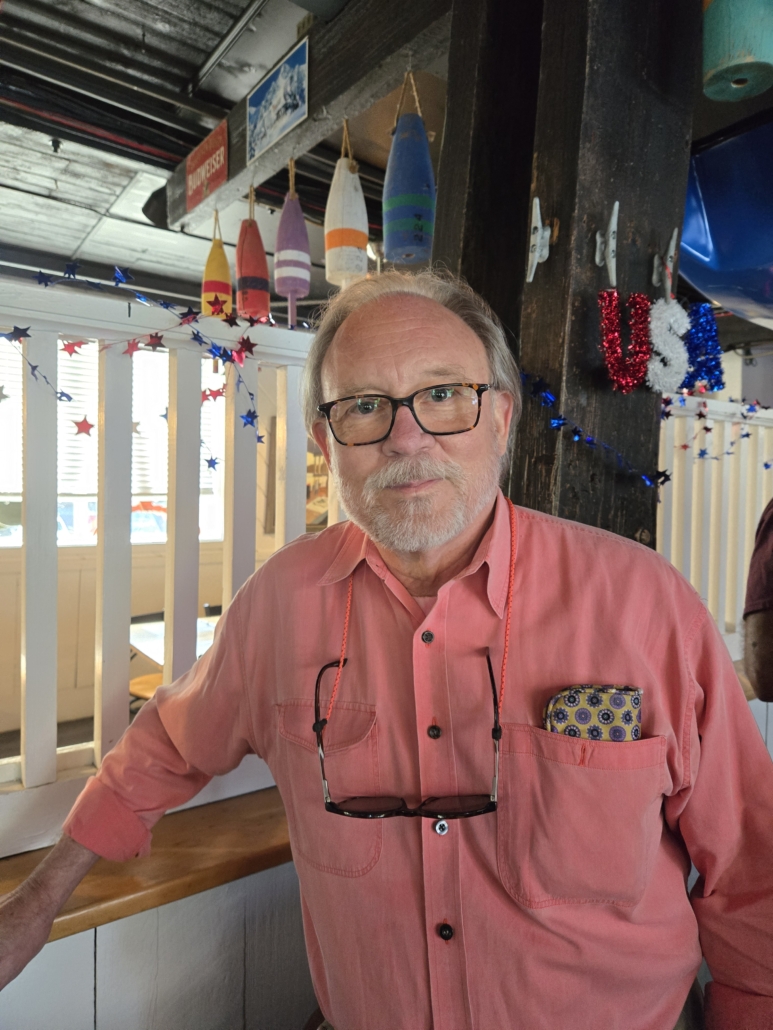1. What inspired you to write this book?
I think of Kurt Vonnegut, an author I greatly admire, whose “Slaughterhouse Five” was inspired by his experiences in a Nazi prisoner-of-war camp in Dresden. On a more prosaic level, “Threadbare” is inspired by my experience in the Golden Age of Fashion in the 80s and 90s and how that era embroiled and tested human frailty. Although very different novels, both are stories about the nature of human virtue in the face of adversity and flawed characters that both authors felt compelled to tell.
2. What exactly is it about and who is it written for?
The book is at its core, a character study of an everyman, perhaps antihero as he imperfectly navigates loves, fame, and failure embedded in a historical period that is itself worthy of explication. It explores the nature of talent v. luck, love v. lust, discipline v. temptation across the landscape of the fashion capitals of the world. It is written for adventure lovers, fashion adherents, romance fans, and anyone interested in the cultural extremes of that era.
3. What do you hope readers will get out of reading your book?
The reader will get the time-honored vicarious experience of feeling the rise and fall of a complicated protagonist as his adventures unfold with ever-greater risk and reward. On a higher level there are lessons on human strength and weakness that transcend the times in which they are embedded. And there is a pervasive element of tragicomedy that will bring pure enjoyment.
4. How did you decide on your book’s title and cover design?
The title springs from an old Norse aphorism of how the fabric of a relationship like a marriage can unravel over time. Given the fashion backdrop, it suggested itself, especially with the importance of Norwegian culture to the story. The cover depicts the iconic symbols of the Western fashion capitals draped in garments that are patched and frayed. The images draw the reader to the heart of the book in visual representation.
5. What advice or words of wisdom do you have for fellow writers -other than run!?
Edison’s admonition is apropos: it’s 90% perspiration. Stick with it and ride the ups and downs. Listen to your inner voice and work the problem. Be wary of those who would prey on your ego.
6. What trends in the book world do you see – and where do you think the book publishing industry is heading?
The old model of agent and publisher is broken. The Indie author has other ways to self-publish or collaborate in hybrid ways. Trends today favor topics of socio-political content. Like fashion, this will change away from the very “serious” themes to the more fanciful and comical. It is said that the definition of fashion is “opposites”. Things go from light to dark, slim to comfortable, solids to patterns without intermediary states. The “swing” of literature, movies and even politics, seem to see similar opposite trends.
7. Were there experiences in your personal life or career that came in handy when writing this book?
To use a literary term, the novel can be seen as a sort of Roman a’ clef. Without having actually gone through the zeitgeist of the fashion design world of the 80s and 90s myself, the work would ring hollow. I draw on those years adding a healthy, (or unhealthy), dose of fictional embellishment. There is still a lot to tell.
8. How would you describe your writing style? Which writers or books is your writing similar to?
Others who have read the book liken the style to that of Tom Wolfe. I don’t claim that comparison, except that my eye is on the foibles of the characters stumbling through the modem landscape. I don’t think I’m quite as acerbic, and don’t focus just on the negative. There will be those who find fault as always. I enjoyed for example, “The Bonfire of the Vanities”, identifying with most of the character’s predicaments. But I hope I give both the positives and negatives of the struggle to survive despite internal and external human conditions.
9. What challenges did you overcome in the writing of this book?
There is a natural entropy in doing anything really hard for a really long time. Writing is like that. I have heard many stories of how authors have persevered in much more challenging times and places, like wartime. Having had no formal training in writing except for the creative writing classes long ago in college, I just had to trust my instincts and draw upon the creative muse that motivated my apparel design. They are not so very different after all. I had to utilize color, pattern, and texture from my vocation to create the plot, motive, circumstances, background, and atmosphere that writing demands.
10. If people can buy or read one book this week or month, why should it be yours?
With my apparel design work, I was always ahead of the market… sometimes too far. With this novel, “Threadbare”, I go not so far into the past to illuminate the present and future. If my themes are part of that newer trend away from the oh-so-serious cultural dynamics of the day, then maybe I’m on to something. I want the experience of reading the book to be fast-paced, entertaining, and page-turning with a message, finally that is more universal than parochial. The times are still accessible, but without chronicling, easily forgotten. The places are thrilling to visit especially in the context of their fashion importance. The characters, like us all, are flawed, but enjoy the journey along with the reader. So, pick the book up. It’s not so heavy. You may have trouble putting it down.


